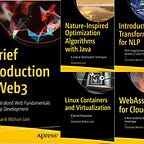Reinforced Retrieval-Augmented Machine Learning (RRAML): A High-Level Overview
A recent paper titled “Reinforced Retrieval-Augmented Machine Learning (RRAML)” presents a novel framework that combines these two powerful techniques to create a system that can learn and adapt based on user feedback. This blog post aims to provide a high-level explanation of the RRAML framework. For a more detailed understanding, you can refer to the original paper here.
Architecture of RRAML
The RRAML framework consists of three main components: a Generative Language Model (GLM), a retriever, and a reasoner.
- Generative Language Model (GLM): The GLM is a large language model, like GPT-3 or GPT-4, which generates an initial response to a user’s prompt.
- Retriever: The retriever is a component that takes the GLM’s response and finds relevant information from an external source, such as a database of documents or the internet.
- Reasoner: The reasoner takes the retrieved documents and the GLM’s initial response, and generates a new, more informed response.
The final output of the system is the response generated by the GLM based on an aggregated prompt, which includes the original prompt, the GLM’s initial response, the retrieved documents, and the reasoner’s response.
Training Process and Flow
Let’s illustrate the flow of the RRAML framework with an example. Suppose a user asks the system to “Explain the concept of quantum computing.”
- The GLM generates an initial response, providing a basic explanation of quantum computing.
- The retriever then finds a scholarly article providing a more detailed explanation of quantum computing.
- The reasoner takes the GLM’s initial response and the retrieved article, and generates a new response that explains quantum superposition and entanglement in more detail.
- The GLM takes the aggregated prompt (which includes the original prompt, the GLM’s initial response, the retrieved article, and the reasoner’s response) and generates a final response.
To reiterate the flow with another example, consider a user asking, “What is the theory of relativity?”
- The GLM provides a basic explanation of the theory of relativity.
- The retriever finds a document that explains the theory in more depth.
- The reasoner generates a new response that delves into the concepts of space-time and energy-mass equivalence.
- The GLM generates a final response based on the aggregated prompt.
Reinforcement Learning for Fine-Tuning
The RRAML framework uses reinforcement learning to fine-tune the retriever and reasoner based on user feedback. If a user found the reasoner’s output helpful and provided positive feedback, the actions that led to that output are reinforced. Conversely, if the user didn’t find the output helpful and provided negative feedback, the reasoner is adjusted to be less likely to generate similar outputs in the future.
This process of fine-tuning allows the reasoner (and the retriever) to learn and adapt over time, improving their ability to generate helpful and relevant responses to user prompts.
Summary
The RRAML framework presents a novel approach to integrating reinforcement learning with large language models. By combining a generative language model with a retriever and a reasoner, and using reinforcement learning to fine-tune these components based on user feedback, RRAML creates a system that can learn and adapt over time, improving its ability to generate helpful responses to user prompts. This represents a significant step forward in the development of intelligent, user-adaptive AI systems.
